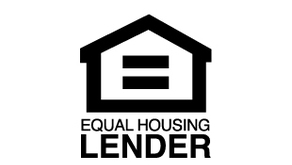In the early years of the VA program, only active-duty service members and returning vets were eligible for a VA loan. But now, the VA has extended the program to include service members of the National Guard and the Army Reserve, surviving spouses, and some cadets.
The VA program was meant to foster homeownership but has failed due to the dissemination of misleading and incorrect information.
The myths and misconceptions surrounding veterans’ eligibility for the program after receiving their first VA loan don’t seem to go away, causing some veterans to miss out on the opportunity to become homeowners. The passing of outdated information from past beneficiaries is another concerning issue.
This article seeks to equip you with the latest guidelines from the U.S. Department of Veterans Affairs (VA) regarding your eligibility and the diversity of your options regarding the VA loan program.
What is the Maximum Number of VA Loans You Can Have?
The VA program is structured to take care of eligible candidates for life. That is why there are no maximum or minimum limits on the number of times a veteran can use the program. It is possible to have more than one VA loan at a time.
The Department of Veterans Affairs is not the lender. Banks and other financial institutions provide the loans for which the department acts as a guarantor.
What’s crucial is that the veteran understands their VA loan stipulations.
Taking Over a VA Loan
A veteran can transfer a VA loan to another person as long as the lender allows it. Taking over another VA loan is known as a loan assumption.
The lender must first determine whether the other person meets their VA loan requirements before proceeding with the assumption process. The most significant advantage of the loan assumption is that not only veterans and active service members can assume the loan, but also anyone deemed qualified by the lender. Notably, not all Lenders allow loan assumptions.
Therefore, if caught in such a situation, you should consider transferring the mortgage to the qualifying person while consulting with the lender.
VA Loan Entitlement
Every VA member who has met the service requirements has a VA loan entitlement. The VA loan entitlement is the specific amount the Department of Veterans Affairs would have to repay a lender if a VA member defaults on their loan. This kind of protection is called the VA loan guarantee.
Depending on their eligibility, veterans may access a single level or both levels of entitlement. Said levels include the basic and secondary tiers. For the basic level, VA members have a $36,000 entitlement and an additional $125,800 for those who qualify for the second tier. Altogether, a veteran could have an entitlement of $161,800.
Reduced Entitlement
An entitlement can be said to be reduced if:
- There is still a loan that you are in the process of repaying
- You are in default of a previous VA loan
- You have paid your loan but still, own the home you purchased with the loan
Your loan guarantee will be up to the conforming limit minus the current entitlement with reduced entitlement.
Full Entitlement
An eligible VA member is said to have full entitlement if they have paid the previous VA loan in full and sold the property or have never received a VA mortgage loan.
Presently, having full entitlement means that you no longer have a limit on loans of over $144,000. You can borrow without making a down payment, and the VA will guarantee up to 25% of the loan amount.
However, this doesn’t mean you can borrow any amount of money. You can access funds per the lender’s requirements. After considering your credit score, income, and debts, the lender will decide whether or not you qualify and by what amount.
Second-Tier Entitlement Calculation
On purchasing a mortgage, your entitlement may get tied up. A typical entitlement is equal to 25% of the loan. But since you may not take a loan that wipes out your entire entitlement, you may have a remainder.
For clarity, let us assume that you have a full entitlement of $161,800 and that you want to take a mortgage of $200,000. A quarter of that is $50,000. After taking the VA loan, you will be left with an entitlement of $111,800 ($161,800 – $50,000).
This remaining amount qualifies you for the second VA loan and makes it possible to have more than one loan at a go. VA members purchasing expensive mortgages have more VA loan entitlement.
Situations in Which a Second-Tier VA Entitlement Is Possible
It is possible to benefit again from the VA loan program after the first VA mortgage loan. Here are four possible ways you can get another VA loan via second-tier entitlement:
Keeping Your House and Getting a New One
The second-tier entitlement allows you to maintain your current house and buy a new primary residence. You must have enough income and entitlement to qualify for this facility.
Purchasing a Home After a VA Loan Default
Veterans can still obtain another loan after a foreclosure or short sale on a previously VA-backed mortgage.
Assumptions for VA Loans
VA loans are transferable, but the VA member’s entitlement must remain with the house. To protect your entitlement, you could have the veteran replace their loan entitlement for your own.
Permanent Change of Station Orders
An officer can be assigned in an area that would require their relocation, perhaps due to the duration of the assignment or distance. An officer may need to take another VA mortgage loan in such an instance.
Restoring Your VA Loan Entitlement
Restoration of the VA loan entitlement is not as direct as it sounds. Once a borrower has used all their entitlement and again wants to seek another loan, they have to apply for the restoration of their entitlement.
The borrower can do VA restoration of entitlement by selling the original property to restore VA loan entitlement. Here, they must sell their house and repay the VA loan balance. If you want to conduct a short sale (selling the house for less than you own), you must consult with the loan servicer.
Another way to restore your VA loan entitlement is by allowing a qualified VA member to assume the loan and substitute the entitlement for theirs. You may also refinance the existing VA loan into a non-VA (conventional, FHA, USDA) product and invoke what’s known as the “one-time restoration of entitlement.”
The Impact of Two VA Loans on One’s Entitlement
Knowing how to manage your VA entitlement is crucial to your loan access continuity. Let us do the math and assume that you’ve bought from a different county with the normal VA limit:
- There is still a loan that you are in the process of repaying
- You are in default of a previous VA loan
- You have paid your loan but still, own the home you purchased with the loan
Per the example above, $447,200 is the maximum amount you can borrow without providing a down payment. Anything above that would need a down payment of 25% of the excesses.
The challenge with the VA loan entitlement is that the certificate of eligibility doesn’t show how the second-tier entitlement works. Therefore, it is advisable to consult with a specialized VA loans officer about your situation.
Your debt-to-income ratio is critical as this will be considered when being offered a VA mortgage loan. To avoid being locked out by lenders, it is essential to fully understand the VA loan requirements so that you can know how to juggle between loans.
Is It Possible to Get a VA Loan Following a Foreclosure?
As much as a foreclosure would be considered damning, it doesn’t mean that you have lost your ability to get another VA loan. The only issue is that you may have a reduced VA loan entitlement, given that the Department of Veterans Affairs suffered a loss on loan.
Following the foreclosure, a veteran will have to undergo the foreclosure waiting for a period now (usually two years). Even then, the waiting period could increase to more than three years if the foreclosure resulted from another government-backed product like a USDA loan.
Lastly, even after the two-year waiting period following a foreclosure, borrowers must still meet the lenders’ credit requirements to qualify for a loan. For instance, lenders have to determine how much entitlement may be left.
Additional Read: How Do VA Loan Works
A Trusted VA Loan Provider
At A and N Mortgage, we pride ourselves on being one of Chicago’s most trusted VA mortgage providers. Contact A and N Mortgage today at 773-305-5626 for more information on our VA loan service offerings.
A and N Mortgage Services Inc, a mortgage banker in Chicago, IL provides you with high-quality home loan programs, including FHA home loans, tailored to fit your unique situation with some of the most competitive rates in the nation. Whether you are a first-time homebuyer, relocating to a new job, or buying an investment property, our expert team will help you use your new mortgage as a smart financial tool.







